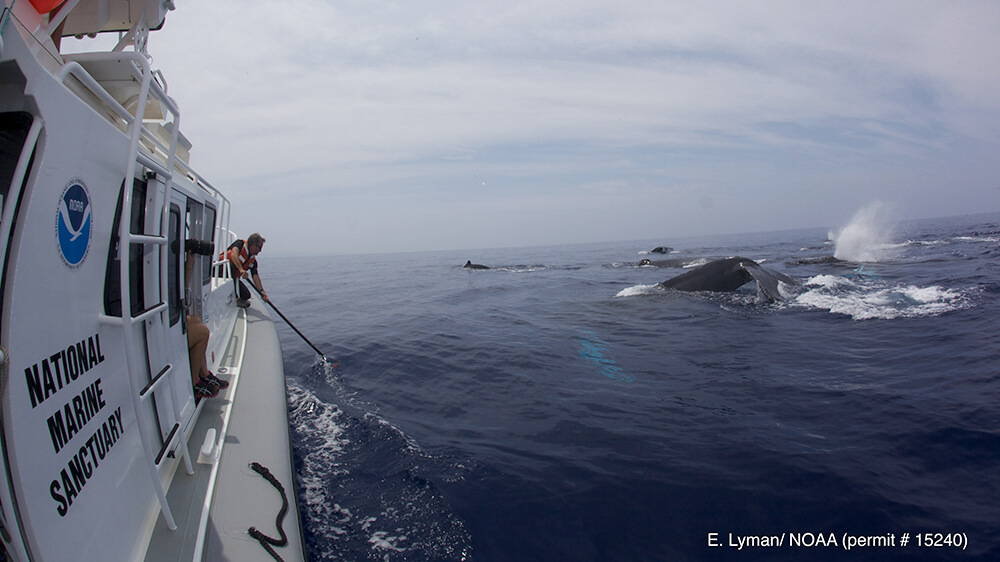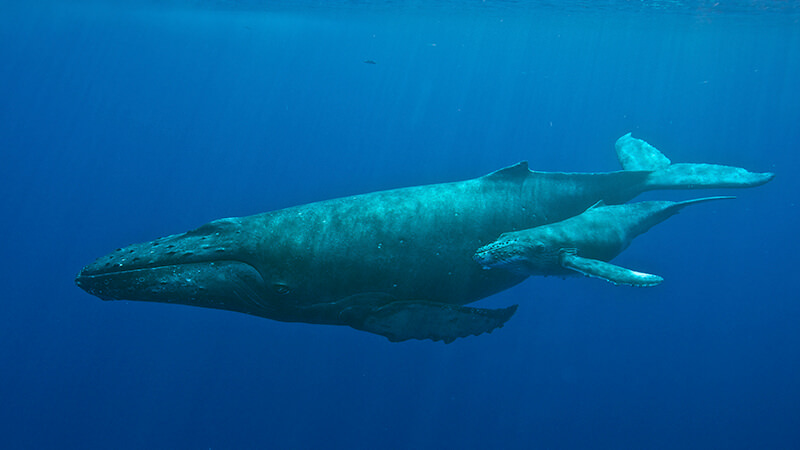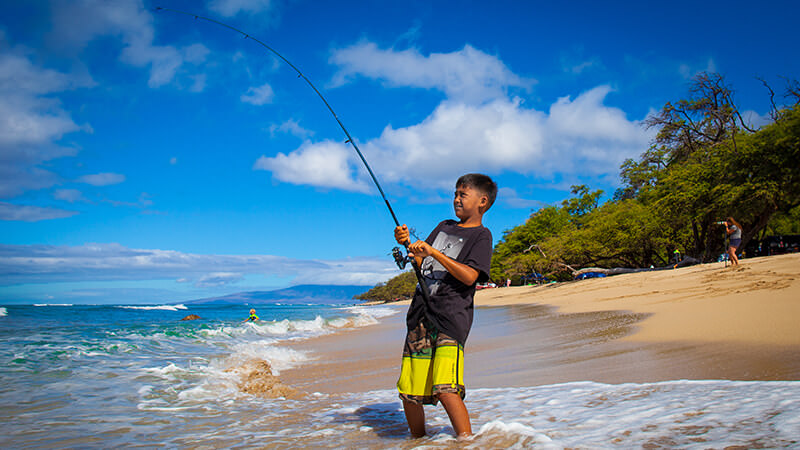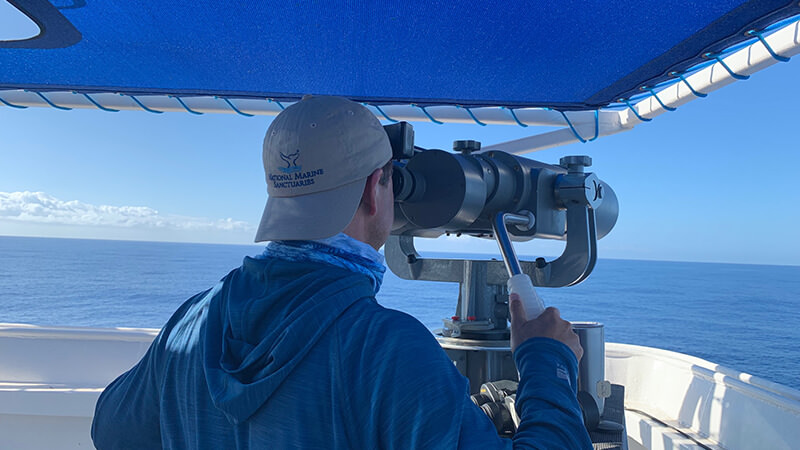
Sanctuary reports vessel/whale collisions; ocean users urged to use care
Every winter, thousands of humpback whales travel to the warm, shallow waters of Hawai‘i to mate, give birth, and raise their young. Hawaiian Islands Humpback Whale National Marine Sanctuary protects these whales and their habitat. From November through April, visitors to the sanctuary can see whales from shore and at sea.
Whale footage taken by Ed Lyman/NOAA, under NOAA Permit #14682
Always keep a safe and legal distance (100 yards) from humpback whales.
To report an entangled whale, call the NOAA Fisheries Hotline at 888-256-9840 or hail the U.S. Coast Guard on VHF channel 16.
To report a violation of approach guidelines and regulations, call the NOAA Fisheries Enforcement Hotline, 800-853-1964.

More than half of the humpback whales in the North Pacific seasonally use the waters around the Hawaiian Islands as their principal breeding and calving wintering ground. The sanctuary's mission is to protect Hawai‘i humpback whales and this extremely important habitat through closely aligned education, research, and resource protection efforts. The sanctuary works with the community and our other partners to reduce threats to humpback whales, including through enforcement.
Photo: Ed Lyman/NOAA, under NOAA permit #14682

The sanctuary encourages water-based activities that are compatible with our mission of protection. Whether you're boating, snorkeling, kayaking, fishing, or whale watching, there's plenty to responsibly enjoy in Hawaiian Islands Humpback Whale National Marine Sanctuary.

The sanctuary leads and collaborates in research projects that assess the Hawai‘i population of humpback whales and their use of sanctuary waters. Studies of humpback whales and their activities include documenting whale distribution and abundance, examining their behavior and monitoring potential human impacts.

Ocean stewardship is deeply embedded in Native Hawaiian culture. Humpback whales, or koholā, are an important part of history, legends, and connection to the sea. The cultural and maritime heritage of Hawai‘i plays a role in management decisions and how the sanctuary's daily activities are carried out.
The Office of National Marine Sanctuaries serves as the trustee for a network of underwater parks encompassing more than 600,000 square miles of marine and Great Lakes waters from Washington state to the Florida Keys, and from Lake Huron to American Samoa. The network includes a system of 14 national marine sanctuaries and Papahānaumokuākea and Rose Atoll marine national monuments.